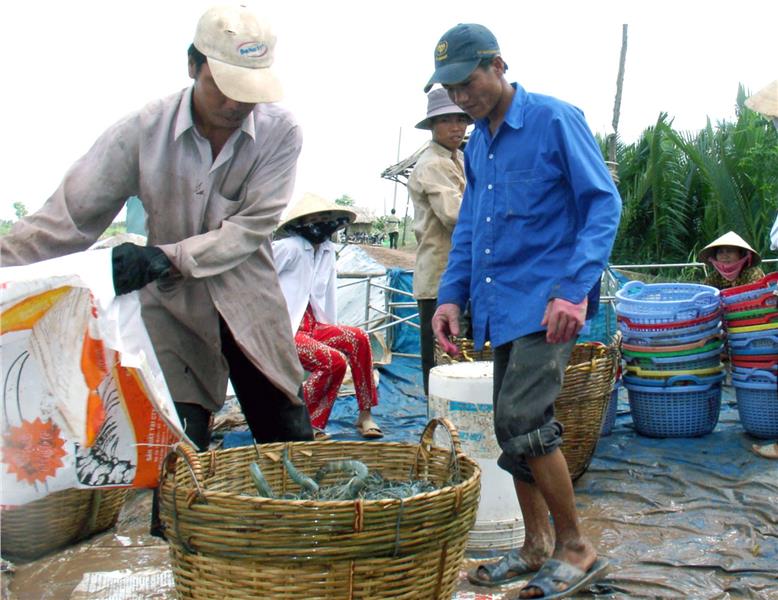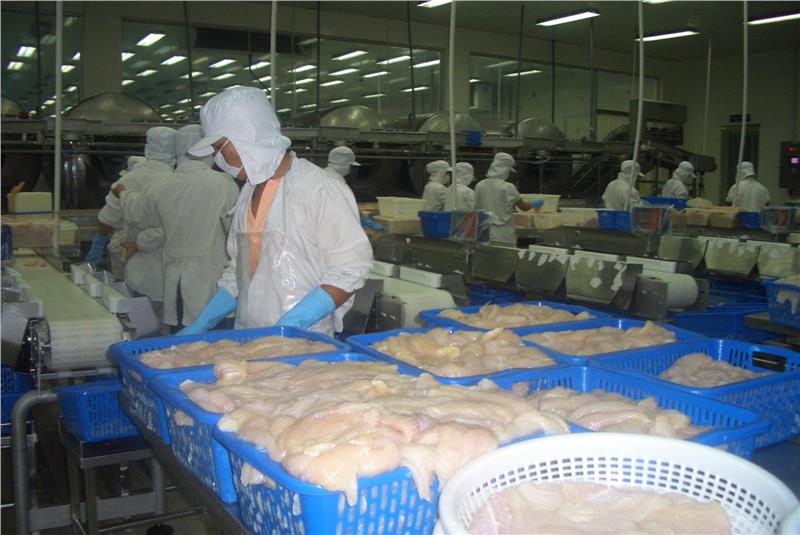Mekong Delta possesses many freshwater resources such as rivers, lakes, and ponds which hold great potential for fishery industry. Fishery industry also plays an important role in the development in Vietnam’s economy. In particular, along with rice, freshwater fisheries are key in developing he regional economies, especially pangasius, a species of catfish which has a high economic value both for exports and in the domestic market. It is reported that Mekong Delta fisheries are appreciated by Europe and U.S markets. Consequently, fishery industry is the economic sector which is given the most priority to develop.
Mr. Nguyen Phong Quang, Deputy of the Southwest Steering Committee, said that to achieve this goal, provinces in Mekong Delta will increase the area for fisheries to 800,000 hectares this year, striving to produce 2.4 million tons of fisheries including 1.2 million tons of pangasius and 380,000 million tons of shrimp.

In first 5 months of 2014, provinces have put 400,000 hectares of water into manufacture and harvested over 1 million tons of fisheries, of which 158,000 tons are shrimps, 0.5 million tons are pangasiuses. Fishermen in Mekong Delta have earned nearly $ 1 billion of revenue. Fisheries in Mekong Delta are mainly black tiger shrimp, white shrimp, pangasius and many other freshwater species. The method adopted is improved extensive culture to the black tiger shrimp and clam, and intensive culture to white shrimp and pangasius. The remaining species are bred in method of improved extensive, semi-intensive and intensive culture. Concentrated breeding areas are provinces of Ca Mau, Bac Lieu, Kien Giang, Soc Trang, Tra Vinh, and Ben Tre. Freshwater fisheries are bred in provinces along Tien and Hau River such as An Giang, Dong Thap, Can Tho, and Vinh Long.

During past times, provinces have applied modern models such as SQF 1000CM, VietGAP, and GlobalGAP as well as strengthened training human resources; assisting enterprises in technological innovation in order to diversify products, meet rigorous demands of international markets; expanding market information system; and improving promotion and marketing for each product. Simultaneously, Mekong Delta continues to construct multi-target irrigation systems for freshwater and brackish water areas which are consistent with climate changes while still ensuring good supply and drainage. In addition, authorities strengthen quarantine to limit to the minimum substandard offspring and breeding.
However, there are many things to do to complete the plan. Provinces are required to enhance environmental management, product storage after harvesting for processing and exporting, quality management and food safety according to international standard. Besides, localities should focus on domestic market to build brands of high-quality products, encourage enterprises and companies in field of fisheries to expand material areas. Thus, output of manufacture can achieve the goal.